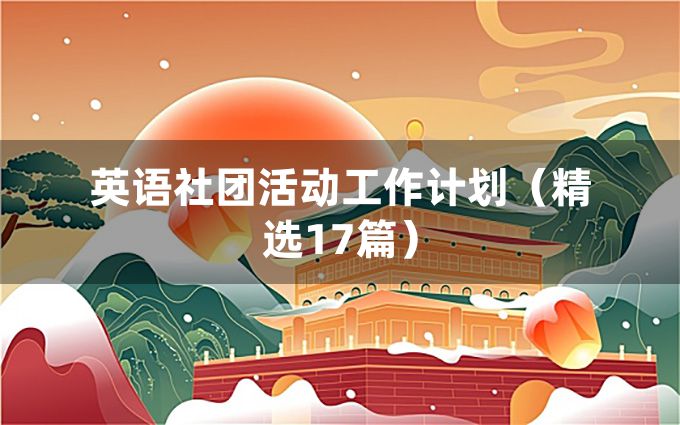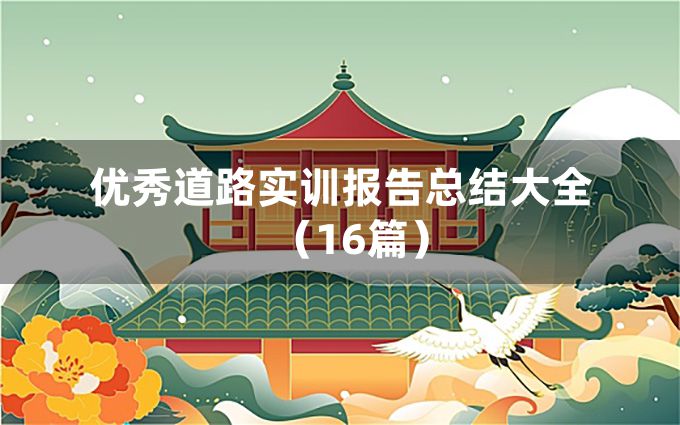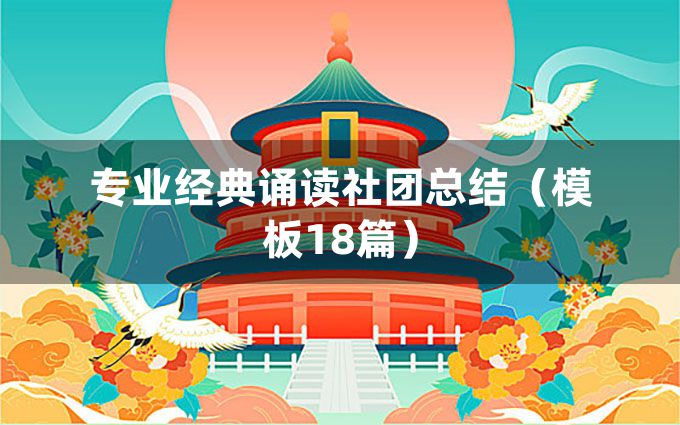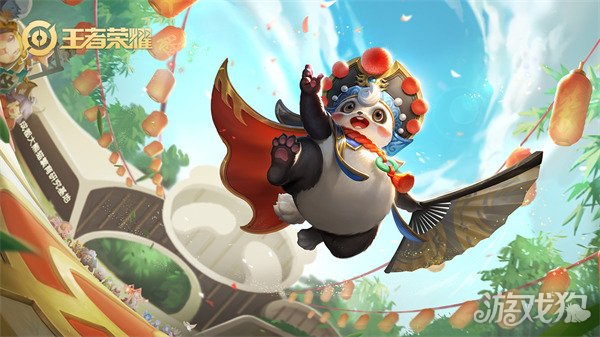英汉语言文化差异范文

英汉语言文化差异篇1
【关键词】语言;文化;翻译技巧
翻译是运用一种语言(译入语)把另外一种语言(源出语)所表达的思维内容准确而完整地重新表达出来的语言活动[1],是沟通各族人民的思想的重要手段。而不管是“译入语”还是“源出语”,作为语言,都要受社会习俗、思维方式、宗教信仰等文化因素的制约和影响。翻译不只是两种语言文字间的相互转换,更是一种跨文化交际行为;翻译的过程不仅是单一语言符号的转换过程,也应该是诠释不同文化背景差异的过程[2]。文化差异翻译处理的好坏直接决定着译文的质量。尽管中西文化差异造成了英汉两种语言翻译上的障碍,只要我们对其有一个深刻的认识,这种障碍并非不可逾越的。本文将分析语言中词汇和成语等方面的文化差异,并就其翻译处理的原则和方法加以探讨。
1、语言中的文化因素
1.1.词汇中的文化因素
在语言中,词语是最积极活跃的部分。社会生活的变迁,民族文化的发展无不在词语中得到直接或间接的反映。某种事物为一个民族所独有,而反映这种事物的概念的词语不能在别的民族的语言中找到等值的形式,这样便产生了词语的不等值和空缺现象。这种现象直接说明了文化的差异。以“龙”与“dragon”为例。许多人把“龙”与“dragon”对等起来,实际上二者根本不是对应词。 “龙”是神异动物,是帝王和高贵的象征;而dragon则是“西方传说中有翼,能喷火的巨大怪物”,是 “魔鬼和罪恶的象征”。
即使是某些学者认为的“共同词语”也有其特殊的文化内涵。例如汉语中有早饭,中饭和晚饭,英语中则有breakfast, lunch, dinner 或者 breakfast, dinner, supper。dinner 既可指“中饭”,又可指“晚饭”。
1.2.习语中的文化因素
习语是语言在使用过程中形成的固定的表达方式,包括成语、谚语、歇后语、典故等。它们不仅言简意赅,而且妙趣横生。英汉习语承载着不同的民族文化特色和文化信息,它的翻译往往是个难点。
习语的产生与生活密切相关。英国是一个岛国,历史上航海业发达;而汉民族在亚洲大陆生活繁衍,对土地有着深厚的感情。比喻花钱浪费,大手大脚,英语是spend money like water,而汉语是“挥金如土”。
与宗教信仰有关的习语也大量地出现在英汉语言中。佛教在中国有悠久的历史,人们相信有“佛主”的存在,产生了 “借花献佛”这样的习语。西方国家多信奉基督教,相关的习语则为God help those who help themselves (自助者天助也)。
由此可见,翻译好英汉词汇和习语,不但要求译者有扎实的语言功底,还要熟悉了解两种语言的文化背景、异域的风俗习惯、民族色彩以及宗教信仰等。
2、翻译中文化差异的处理原则
人们在感情,在对客观事物的感受及社会经历等方面会有相似之处,因此语言形式和意义上的对等也会出现,此类语言的字面意义和形象意义所传达出的文化信息是相同的,可以互译[3]。如Practice makes perfect与“熟能生巧”。但在翻译实践中,译者遇到更多的是各国的文化差异,构成了翻译的主要障碍。关于文化有差异情况下的翻译原则,中外翻译理论家们提出了不同的主张,但中心都是译文要忠实准确地表达原文的意义。所谓忠实表达原文的意义,指忠实表达原文的字面意义、形象意义和隐含意义三方面[4]。
文化差异的存在会导致字面意义或形象意义与隐含意义在翻译时出现差异,此时字面意义或形象意义应当服从隐含意义。如white lie应译为“恶意的谎言”而不能译为“白色的谎言”。其次,当源出语的形象意义在移入语中可能会找不到对应词汇或者没有相同的形象,这时首先要考虑的是隐含意义的准确传达。如Achilles’heel不要译为“阿克勒斯的脚后跟”,而译出它的隐含意义“唯一致命的弱点”更恰当,因为Achilles在中国读者心目中没有具体形象,会造成理解上的困难。总之,隐含意义,也就是原文意欲表达的意义是最重要的。
3、翻译中文化特征的处理方法
对于英汉中的文化差异,翻译时应该根据原文内容,采用适当的翻译技巧,以期获得理想的译文。笔者通过学习和实践翻译理论发现好的译作总是直译、意译以及其他方法的综合运用。我们应将英汉的翻译原则和方法具体化。
3.1 直译法。
所谓直译,就是指将原文按字面翻译,保留原文的内容,修辞等表现手法。对于英汉词句的字面意义和形象意义所传达出的文化信息相同时可以直译。如Easy come,easy go可直译为“来得容易,去得快”;当原文的隐含意义很明显或很容易推断时,也可用直译法。如:All roads lead to Rome译成“条条大道通罗马”。读者只要用心体会一下,就会明白其隐含意义,即“成功的方法不止一种”,这样不但保留了原文的形象,而且增加了阅读的趣味。但是,直译应区别于死译。
3.2意译
如果翻译时保留原语的字面意义和形象意义会给读者带来理解上的困难,则应译出隐含意义来帮助理解。如when in Rome,do as the Roman do,如果按字面意义直译,读者会不明白,为什么是罗马而不是别的什么地方?其实它的隐含意义就是“人乡随俗”,若译为“到什么山唱什么歌”,则更为形象生动。我们知道“龙”在英汉两种文化中的意义完全不同,所以汉语“望子成龙”的形象在英译时不能保留,可意译为to expect one’s child to become an outstanding personage.这样虽然牺牲了原文的某些文化特色,但是有利于文本语意思的正确传达。
3.3 注释法。
初次介绍某种文化现象时或者只有把历史背景和典故出处说明以后才能充分表达原文的意义时,应该使用注释法, 即先直译再加注的方法。例如:They have ,by this very act , opened a Pandora’s box.。译为:正是他们的这种做法,打开了希腊神话中潘朵拉的盒子,造成了混乱和不幸。Pandora 原是希腊神话传说中从天宫下凡的人类第一个女性,Pandora’s box 之意表面上看来是贵重之物,而骨子里却是祸害,其含义为“万恶之源”, “造成极大混乱”,若直译Pandora’s box 而不加注,会让读者难以理解其真正喻义。
译者能否翻译出好的作品,不仅取决于对语言本身的理解,而且取决于对语言所负载的文化意蕴的理解。唯有深刻理解英汉两种语言的文化差异.才能跨越语言的鸿沟,从而使翻译中的问题迎刃而解。总之,翻译是一种非常复杂的语际活动,它不仅仅是对语言的翻译,更是对文化的翻译。作为译者,一定要在了解本民族文化的基础上,尽可能多的了解原语民族的文化,做到不仅精通其语言,还熟知其历史、传统、习俗、哲学等诸多方面,这样经过两相对比,才可能做出真正对等的传译,实现文化交流的目的。
【参考文献】
[1]李富乐.文化视阈下的翻译活动[J].科技信息,2009,23:204
[2]杨自俭.英汉语比较与翻译[M].上海:上海外语教育出版社,2000.
英汉语言文化差异篇2
关键词:英汉语言;文化;差异;跨文化交际
中图分类号:G633.4文献标识码:A文章编号:16723198(2007)11020801
1历史文化差异
历史文化指的是由特定的历史发展进程和社会遗产的沉淀所形成的文化。由于各个民族和国家的历史发展不同,因而在其漫长的历史长河中所积淀形成的历史文化也不相同。在两种语言之间进行交际时,会经常遇到由于历史文化差异而出现的交际、理解难题。
例如,“东施效颦”这一汉语成语典故,对中国人来说,不难理解其文化内涵,但对于不甚了解中国历史文化的西方人来说,若仅仅理解为“Tung Shih imitates His Shih”,就没有准确、形象地表达和再现原典故的含义。东施是谁?西施又是谁?就没有交待清楚。为了让西方读者能了解这一成语的内涵,比较合适的做法是采用加注的方法: Tung Shih imitates His Shih (His Shih was a famous beauty, Tung shih was an ugly who tried to imitate her way)。这样,就会使读者一目了然。
对于有些历史人物和历史典故,可采用类比的理解方法。据说,有一次周总理陪外国客人观看戏剧“梁山伯与祝英台”,翻译作了很多说明也没能让外国客人弄懂故事内容。此时,周总理提示翻译说,梁山伯与祝英台就是中国的罗米欧与朱丽叶。通过这一类比,外国客人马上明白了剧情的主题思想。
中国历史灿烂悠久,华夏文化源远流长,博大精深。与此相联系,中国的历史成语典故俯拾即是,意蕴浓厚,如:卧薪尝胆、负荆请罪、亡羊补牢、塞翁失马、滥竽充数、朝秦暮楚、毛遂自荐、班门弄斧、名落孙山、三顾茅庐以及“项庄舞剑,意在沛公”、“司马昭之心,路人皆知”、 “蜀中无大将,寥化作先锋” “狗咬吕洞宾,不识好人心”等等,每一个历史典故和成语都包含有丰富的历史文化信息,都是一个生动的历史故事。因此在交际、理解时,应在弄懂典故含意的基础上,注重文化之间的差异,采取恰当的交流、表达方法。
中国文化如此,西方文化亦如此。《圣经》中仅收入辞典的典故就有700条,莎士比亚作品的典故更是熠熠生辉,有些莎士比亚作品的人物和事件本身就成了典故。
2地域文化差异
地域文化指的是由所处地域、自然条件和地理环境所形成的文化,表现在不同民族对同一种现象或事物采用不同的语言形式来表达。在中国,自古以来便有“南面为主,北面为朝”,南为尊北为卑的传统,人们经常说“从南到北,南来北往”,“南”的方位在说法上常常置前。而英语文化却恰恰相反,英美人从英语地域文化上来理解汉语中的“从南到北”,自然是“from north tosouth”,“北屋”为“a room with southern exposure”。诸如“西北”、“西南”、“东北”、“东南”之类的方位词语,英语方位在说法上也和汉语文化相反,分别为“northwest ”,“southwest”,“northeast”,“southest”。在中国人的心目中,“东风”象征“春天”、“温暖”,它吹绿了中华大地,使万物复苏,故有“东风报春”之说,所以中国人偏爱东风。而英国的“东风”(east wind)则是从欧洲大陆北部吹来的,象征“寒冷”、 “令人不愉快”,所以英国人讨厌“东风”。不过英国人喜欢“西风”,它给英伦三岛送去春天,故有“西风报春”之说。英国浪漫主义诗人雪莱就曾写有一首脍炙人口的《西风颂》(Ode to the West Wind)。在诗的最后,诗人名传千古的佳句表达了他对未来的美好憧憬和坚定信念:Oh,the west wind,if winter comes,can spring be far behind?(啊,西风,假如冬天已经来临,春天还会远吗?)理解此诗时应对这一地域文化差异作一注释,否则会给缺乏英国地域文化知识的一些汉语读者造成困惑或误解。
地域文化方面的差异,使得不同民族在对同一事物的认识上存在着差异。有些事物在一种语言文化里具有丰富的内涵和外延,且能引起美好的联想,而在另一种语言文化里却平淡无奇,毫无文化意义。这就是文化的个性和差异。比如,在中国传统文化里,耕牛是勤劳的象征,人们常把那些勤勤恳恳、任劳任怨的人比喻为具有老黄牛精神。古往今来我国不少名家皆喜以牛自喻:鲁迅先生曾有“俯首甘为孺子牛”的名句;明代名臣蒋冕年迈衣锦还乡后,皇上御诗,称其为“江南――老牛”,蒋冕也作诗谢辞:“老牛用力已多年,劲破皮穿只想眠,犁耙已休春雨足,主人何用苦加鞭”。所以如此,是因为中国自古以来以牛耕为主,耕牛与农民朝夕相处,且勤劳忠厚,自然形成了中国人对牛的热爱和赞誉。与中国不同,英国古代主要靠马耕,牛则很少干活,因此马在英美文化中则是勤劳和吃苦耐劳的象征。
3风俗文化差异
风俗文化指的是贯穿于日常社会生活和交际活动中由民族的风俗习惯形成的文化。不同的民族在招呼、称谓、道谢、恭维、致歉、告别、打电话等方面表现出不同的民族文化规定和习俗。如中国人见面打招呼时常用的几句客套话是“你到哪儿?”“你要干什么?”“你吃过饭了吗?”,这几句话中国文化里并无多深的含意,只不过是无关紧要的,礼节性的打招呼的一种形式。然而西方人对这几句却很敏感和认真,“你去哪儿?”“你要干什么?”在他们看来纯属自己的私事,别人不能随便打听,除非是亲密的朋友。而“你吃过饭了吗?”则使他们不知所措,对方会以为你想请他(她)吃饭。像这样的见面问候,应视具体情况做相应的文化转换,改为英语惯用语“hello”,“goodmorning!”,“how are you?”等。
各民族的文化作为人类社会发展的一个组成部分,具有共性的东西,但更多的是由于文化差异导致的个性的东西。
4宗教文化差异
宗教文化是人类文化的一个重要组成部分,它指的是由民族的宗教信仰、意识等所形成的文化。儒教、道教、佛教是中国的三大宗教,这三大宗教在中国民众中有着深远的影响。在我国的传统文化中,我们有道教的“玉帝”,佛教的“阎王”,有神话中的“龙王”,有“开天辟地”的盘古和“主宰自然界”的老天爷。而这些概念欧美文化中并不存在。欧美人多信仰基督教,认为世界是上帝创造的,世上的一切都按上帝的旨意安排的。对于中西宗教文化方面存在的差异,在交流、理解时应予注意。例如,英国翻译家大卫•霍克斯在翻译《红楼梦》刘姥姥说的“谋事在人,成事在天”这句话时,把它英译为“Man propses,God disposes”,似乎神形兼备,汉语成语巧对英语谚话。但由于两者存在着不同的宗教背景和深层的文化差异,译文就有使刘姥姥由信佛变成了西方基督教徒之嫌了。因为严格地说,此例中的“天”与“God”并不完全对应。在此认为用“Heaven”来代替“God”更忠实于原文。
总之,文化差异是一个内容十分丰富而又极其复杂的问题。要在两种语言之间交流、交际、表达,除了通晓两国的语言文字外,还必须有深厚的两种语言文化功底,深刻理解文化之间的差异。只有这样,才能不仅做到语言意义上的等值,而且做到真正文化意义上的等值,也才能在跨文化交际中做到得心应手、挥洒自如。
参考文献
[1]现代汉英词典[S].北京:北京外语教学与研究出版社,1988.
[2]R•R•k哈特曼,著.黄长著等译.语言与语言学词典[S].上海:上海辞书出版社,1981.
[3]王春晖.英语课堂教学中东西方文化差异与跨文化非语言交际[J].中小学外语教学,2001.
[4]张培基,喻云根,李宗杰等.英汉翻译教程[M].上海:上海外语教育出版社,1980.
[5]吴伟仁.英国文学史及选读[M].北京:北京外语教学与研究出版社,1998.
英汉语言文化差异篇3
the world is getting increasingly globalized. advertisement is closely related to the culture. the purpose of an advertisement is to persuade target consumesers to buy the advertised products or services. thus, it is a most important task to be aware of the differences between chinese culture and western culture. this paper analyzes the differences from six aspects: monism versus pluralism, collectivism versus individualism, the implicit way versus the direct way, the imagery pattern versus the abstract pattern, respect of authority versus respect of self-performance, and the differences of social background and aesthetics.
some defects and even unsuccessful advertisements are made because of the poor quality of translation. this paper proceeds from problems in advertising translation that the translators do not have a good command of the nation-specific culture and is too adhesive to the advertisement’s superficial meaning while there are a lot of cultural factors hidden in the present advertising translation. in fact, advertisement translation requires more than just rendering sentences into another language. translators have to convert the ideas and thoughts behind the sentences into the target language by applying the knowledge of the target culture. this paper suggests some methods to make advertising translation in view of the language and culture differences.
[key words] advertising language; culture difference; advertising translation
【摘 要】 广告作为文化的产物,可以更直接地展示语言和文化的关系,所以广告语言是一门具有浓郁文化色彩与时代特点的艺术形式。本文对中、英广告语言进行了探讨,揭示了中英广告的语言在语音、语义、文字形式及修辞等方面的差异以及文化差异。然后,文章分析了广告语言翻译中存在的问题,从文化的角度提出了有关广告翻译的艺术的有效方法。
因为全球的经济一体化,所以广告语言涉及了大量的文化知识。既然广告语言的目的是劝导目标消费者购买其产品或服务,那么充分理解中西文化差异就成了一项举足轻重的任务。本文从六个方面进行分析,它们依次是一元论和多元论、集体主义和个人主义、含蓄和率直、形象和抽象、权威意识从众心理和自身功效自身价值、社会历史背景、审美方式等差异。
中英广告的互译中,有许多不理想的实例,有的甚至导致了销售挫折.本文分析了问题的原因,主要是在于当今广告翻译同样蕴藏着大量的文化,而译者却没有足够的文化的驾驭能力,太拘泥于原文表层。事实上,广告的翻译不是简单地把句子翻译出来。翻译人员要充分运用目标文化知识,把句子后而所承载的思想、概念尤其是文化传递给译入语的目标消费者。所以本文旨从广告语言文化差异的角度出发介绍几种英汉广告互译的方法。
【关键词】 广告语言;文化差异;广告翻译
1.linguistic differences reflected in advertisements
shen xiaolong[1] once summarizes that western languages are rule-governed while the chinese language is people-governed. in other word, chinese is a language governed by meaning. chinese is regarded as a flexible language which can be long or short in its lexical units, and is based on the language of logic phrase chunks while western language are made up of verb central elements which are inflexible.
the following part of this paper will discuss seven aspects of linguistic differences reflected in advertisement.
1.1 flowing chunks vs. sv structure
jin huikang[2] compares the chinese and english languages in details. in view of syntax, chinese sentences connect minor-clauses according to chronological or logical order. the structure seems short and loose. it seldom focuses on one rigid point but moves according with the logical order and the changing rhythm. unlike the chinese structure, english sentence displays a spatial arrangement with the verb as a center. they are clear in meaning and tight in structure. therefore, chinese syntactic structures usually employ parataxis, while english adopts hypostasis. in translation, we must get rid of our own way of thinking, and arrange sentences conforming to the target rules and conventions. the following examples show these intrinsic differences working in chinese and english, and help us explore some plausible translation methods.
(1) 境内西湖如明镜,千峰凝翠,洞壑幽深,风光绮丽。
the west lake is like a mirror, embellished all around with green hills and deep caves of enchanting beauty. [3]
obviously, the original structure is changed in the target text. the structure of the chinese advertisement is loose with some short clauses, whereas the english one breaks it into one sentence, which is centered on a verb, with modifiers of participle phrase, proposition phrase, and noun phrase around it. by doing so, the translation emphasizes the central meaning in the sv structure "the west lake is like a mirror" and specifies the implied logical relationship in the surface form. reflecting linguistic features of english language, the translation is a successful one in both content and function.
1.2 flowery language vs. concise wording[4]
“when concerning about the rhetoric, chinese tends to use gorgeous words while english has a vivid character of conciseness.
“chinese is good writer to express their feelings by writing and try their best to apply grand vocabulary to describe beautiful and moving images to be sounded elegantly. many high-sounding words can be found in chinese. for instance, in chinese advertisements we frequently see words like“一流”(first class),“完美”(perfect),“独特”(specific) regardless of the quality of goods being advertised. with regard to language forms, the chinese language strives for symmetry in structure and rhyme in sound, hence reading neat, implicit and musical. for example, four-character phrases, parallelism, antithesis appears frequently in chinese. in order to achieve rhyming, emphasis or neat structure chinese language often resorts to tautology.
“on the contrary, western literature and art have been developing under the theory of imitating the reality. the english language reflects this theory and proves to be objective, factual and rational. it has tight sentence structure, meticulous stream of thought, and logical relationship between linguistic units, concise wording and straightforward description. all in all, brevity is the soul of wit, or in other words, a proper word in a proper place is good english. abusing of florid language is forbidden in good english, for it is considered illogical and may harm the original meaning or communication.
“thus chinese and english advertisements are quite different, especially when describing scenery in tourist advertisements. it is a language for poets to give expression to special feelings instead of defining or judging. even when describing sceneries, english displays a beauty of form, straightforward, explicit, objective, unlike the casual, subjective chinese. for example, the following advertisement written by a native speaker of english is concise and plain, and through simile and combination of concrete scenes, it provides enough space for imagination. however, from the point of view of chinese, it may be too plain. for example:
(2)tiny islands are strung around the edge of the peninsula like a pearl necklace. hunks of coral reef, coconut palms and fine white sand.
“if we translate it word by word, it will not meet chinese readers’ expectation. so abundant modifiers such as“礁红”,“成片”,and“如银”,and four-character phrases like “玲珑小巧”,and“如诗如画”are employed to make the translated version read beautiful.
“ 座座岛屿玲珑小巧,紧密相连,像一串珍珠缀成的项链,环绕着半岛边缘。
岛上珊瑚礁红,椰树成片,沙滩如银,景色如诗如画。
“the bold characters add charm to the scenic spot and contribute to the whole rhyming structure but mean nothing to english readers because they are repetitive and wordy. the same is true that in c-e translation, those superfluous modifiers should be omitted, adapted or implicit between lines so as to make the target version conform to the westerners’ aesthetic standards.”
1.3 speech contrast[5]
the pronunciation of the language can cause the mentally different sense of hearing result, and stir up the different reaction mentally, however it is soft or clear and crisp or strong, or dignified. in advertising language, we usually make use of onomatopoeic motivation, sound symbolism and echoism which could easily cause the target audience’s aesthetic feeling. but there exist a great difference between chinese and western speech, onomatopoeia and rhythm. as a result, it makes translator puzzled .in english advertising words, in order to make the ad full of aesthetic feeling, they often make use of alliteration, assonance, rhyme, and consonance. for example, the advertisement phrase” never late on father’s day. " there are two assonance [ei] which sound musically harmonious. however, it is quite difficult to attain this aesthetic feeling in its chinese translation. moreover while translating we should still notice some advertisements phrase sound may cause to lead to bad meaning in another language. for example the japanese company of toshiba once uses an advertisement :
(3)" 东芝(toshiba) , 东芝(toshiba) , 大家的东芝”.this is a advertising lyric .the first “东芝”is translated into the sound "to shi ba". hence young people jokingly read it as“偷去吧,偷去吧,大家的东西”in this way ,there’s no solemnity at all.
1.4 semantic contrast[5]
language is an essential part as well as the carrier of a culture, which not only reflects its racial history and cultural background, but also includes the views, life style, and thinking method. meanwhile, advertising language, one branch of the language, is also reflected by the culture. it is not enough for advertising translators only to know the literal meaning of an ad, for it may be endowed with extended meaning and cultural implication. fully competent advertising translators are supposed to have a good command of religions, traditions, ethnic attitudes, the spirit of community, and purchasing habits of the target countries. otherwise, the translated ads might go against the original intention of the producers in the following four aspects.
1) translation conveys a derogatory sense in the target culture. for example, the shanghai-produced pen branded as“白翎” could receive welcome in english-speaking countries, for the brand is translated as white feather". unfortunately, "white feather" is a symbol or mark of cowardice in english. it derives the connotation from the belief that white feather in a gamecock’s tail is a sign of a poor fighter. the english idiom, "show the white feather", means "sneak away at a critical juncture". therefore, "white feather" is used to represent caitiffs. the translation nullifies the strengths of the company on the international market and becomes a disadvantage that fails to serve the interests of the producers or those of the distributors.
2) translation happens to be politically inappropriate. when introduced to foreign countries, the chinese brand of canvas shoes“大鹏”is rendered as "roc", which is a sort of giant bird in arabic fables. however, "roc" happens to be the abbreviation of "republic of china". obviously, the translation stirs up inappropriate political associations.
3) translation is not elegant enough. in english, "cock" usually has the implied meaning of a certain part of human body. if the brand name“金鸡” is literally translated into "golden cock", the translated term will annihilate the good image of the products and leave the target audience the impression of vulgarity. in fact, there is a better version for“金鸡,’-golden rooster.
4) translation by using chinese phonetic letters coincides with english words with derogatory sense. the typical example is“马戏扑克”.the version "maxi puke” reminds the english consumers of something revolting and unpleasant, for "maxi" means big in english and "puke" indicates vomited food or drink.
1.5 differences between character form[5]
it is self-evident that various countries, nationalities and regions use a variety of characters. furthermore, likes and dislikes for certain characters are widely divergent. it is reported that japanese are in favor of such chinese characters as“诚”、“梦”、“爱”、“愁”and “美” while most chinese are accustomed to“福”、“寿”、“喜”and“乐”.in accordance with the american author irving wallace, the most beautiful english words are chime, golden, lullaby,melody and murmuring, etc. since chinese is a visual symbolic system with the most precise structure for recording human speech, the pictographic and associative chinese characters are not only potential in transmitting message, but also offer great additional aesthetic function so as to arouse consumers’ positive reaction. unlike chinese, english is an alphabetical system of writing and can hardly produce artistic image only through its words. in consequence, it is by no means an easy job to give accurate and elegant english versions for the chinese ads.
in case of untranslatability arising from character differences, advertising translators have to exert all strengths to seek other methods, for instance, to create a completely new ad for the same product intended for the target market. when introducing its products to china, japanese toyota automobile company ingeniously employs“车到山前必有路,有路必有丰田车”to stimulate chinese consumers into purchases.
1.6 rhetoric contrast[5]
english is rapidly becoming the universal language for international business. it is inevitable for chinese producers to translate their ads into english to gain a place on the world market. rhetoric devices are the most commonly used tools in english advertising copywriting. there do exist differences in rhetorical figures between chinese and english, and these differences may put translators in a difficult position. for instance:
(4) 黄河冰箱,领“鲜”一步。
this ad adopts the rhetorical device of pun, which is difficult to translate. the translator can hardly render the meaning without sacrificing the form, or maintain the original flavor without distorting the meaning. the translation of rhetorical devices in chinese ads is a knotty problem, which has blocked the way of many translators of chinese ads. as stated in the previous part of the thesis, what should be borne in mind is that communication becomes effective abroad only after the message has been appropriately translated. without this adequate and expressive translation, it is very unlikely to produce an impact on the foreign consumer. therefore, the author tries to make a study of the rhetorical devices used in advertising english to pave the way for the application of english rhetoric to the translation of chinese ads.
1.7 the influence on the advertising translation
translation is a bilingual and bicultural activity. the translator always seeks to strike a balance between the two languages and two cultures involved in the activity. any shift of emphasis from the source language and culture to the target counterparts or vice versa may result in the difference between literal translation and free translation, faithful translation and idiomatic translation, semantic translation and communicative translation, word-for-word translation and adaptation. as the major function of advertising is to encourage sales, i.e., to persuade the target audience to make a purchase, advertising translation, which aims at promoting sales on the overseas market, should necessarily lay its emphasis on the overseas audience, i.e., the target language readership. what should be favored in advertising translation is the message rather than the form, the sense instead of the words, the spirit and not the structure. in order to convey the original message, render the primary sense and display the right spirit, the form, words and structure of the source advertising text can be retained if possible, adapted and even converted if necessary. the translator must try, by hook or by crook, to produce the corresponding effect, or in other words, to create similar response from the target language readership.
2.theoretical background
two aspects of advertising language will be discussed in this part, the one is about cultural differences and the other is concerning about the advertising translation.
2.1 relation between language, culture and thought
according to bernstein, language is something which both influences culture and is in turn influenced by culture, with the second influence apparently stronger than the first. according to brown, culture is really an integral part of the interaction between language and thought. culture patterns, customs and ways of life are expressed in language; culture-specific worldviews are reflected in language.
2.2 culture and advertising language
advertising language is reflective of literature, psychology and aesthetics of the cultural community. it carries marks of influence of that cultural community’s tradition in its worldviews, social values, religion and the like. for instance, american advertisements mirror americans’ cultural psychology-quest for adventure and individuality. this is suggested by the linguistic preference for words like adventure, different, fearless, exhilarating, bold, new and innovative, whereas, the psychology reflected in chinese advertisements tends to be pursuit for, say, kinship, perfection and family unification.
the culture differences reflect on the language, especially on the advertising language. therefore, there are certain concepts which can be activates by an english word but not by its chinese equivalent. it is quite possible that a chinese version of an american advertisement may not trigger the intended response in the chinese consumers, and what’s worse, it may not be understood by them.
hence, the more a translator knows about how a cultural group view such things as humor, interpersonal relationship, life and work style, the more successfully he or she will be able to produce an effective advertisement translation.
3.cultural differences in advertising language
the faster the economy grows; the more exchange there will be. because of the global economic market, culture differences can be reflected everywhere. the advertisement is the active constituent in the whole market, and the advertising language is full of abundant culture. so a qualified advertiser should know clear about the basic cultural differences and he or she can make a competitive advertisement, which can be well understood and arouse the sympathetic purchasing action. thus this chapter will explain the basic cultural difference from the six aspects.
3.1 monism versus pluralism[6]
from the aspect of culture basic form, chinese culture has the monism viewpoint and the western culture has the pluralism viewpoint. "nature and human are in oneness" is one of chinese philosophy concepts in chinese traditional culture. it insists that nature and human should be in harmony. contrary to the chinese culture, the western culture insists on the view of pluralism. it emphasizes on the changes and differences of the matter, self-development, and enterprising spirits.
some chinese advertisements meet the culture psychology of chinese public, and create some preferable advertising words. for example:
(5)天堂水沏的龙井茶,娃哈哈矿泉水茶饮料。(beverage)
(6)天地间造化,动静皆风云。(car)
(7)一份好奶,一片云;
远在天边,
近在你我心间……
天生的好奶,天山雪。
(fresh milk)
the three advertising examples take advantage of the idea "nature and human are in oneness", and create imagining language in the way of empathy. the means of artistic expression attract the readers’ attention and the advertisement gets its ideal effect. the advertiser takes the wahaha beverage as the holy water from paradise by using a metaphor. "water from the paradise” comes from the five-thousand-year-old chinese culture. the myth makes the common water noble and mysterious. the consumers feel it should be out of ordinary if they buy the merchandise. the pure, the holy and the rich fragrant make the tea beverage be the essence of heaven and earth. so the products fascinate the consumers so much that arouse the people’s enthusiasm and the strong purchase desire. this advertisement gets it goal.
the english advertisements are affected by the pluralism viewpoint of western culture which prefers the individual freedom, self-development and the creative ability. it also encourages people to transform world and conquer the nature. these advertisements highlight the importance of person self-development, and publicize their products from point of view of personality. they show the ideas in western value system that people can change everything and people can create everything. the advertisements manifest the beliefs that people should pursuit the freedom and the self-development, and create the future. theses expressions satisfy the consumers’ personality development and arouse the sympathetic responses.
3.2 collectivism versus individualism[6]
at the value aspect, the chinese culture worships the selfless dedication. personal value lies in the dedication. in china’s traditional culture, philanthropism, kind and justice always is the society value in worship. to chinese, personal happiness is in accordance with the collective benefits. consideration, care and love have been the state of mind that the people emphasize. therefore, chinese people pay more attention to national affairs, family affairs, everything concerned, and giving others with very considerate and concerning care is regarded as virtue. but in the western society culture, people emphasize the character personal freedom, ego development and personal spirit of enterprise, personal benefits are beyond on the collective benefits. the different value will reflect by all means at each ad language. the examples listed below could prove:
(8) 妈妈,我又梦见了村边的小溪,梦见了
奶奶,梦见了您。妈妈,我给您捎去一样好东西。威力洗衣机,献给妈妈的爱。(威力牌洗衣机)
(9) 让妻子从繁重的家务中解脱出来,这是每个丈夫的职责.
the author of these chinese advertisement places oneself among the consumers. we can easily found something tender and affable. adopting the empathy of feeling, arouse the consumer’s family affection and friendship. therefore, the ad read very human. show consideration to the others, the kind and justice universal love, respect the old and love the young, the peaceful family have been the virtue that the our country publicizes in the traditional culture, but these advertisement give these traditional virtues for product, with a thick affection color took into exaggeration, making a claim that the product can be trusted and feel warm with it .on the contrary, english advertisement emphasize the personal struggle, person freedom and ego realization, encouraging character development is usually an english advertisement claim method. such as:
(10) lufthansa
our personal service will appeal to your individual taste.
( lufthansa airline)
(11) for the man who makes his own rules.
premier
from johnnie walker
rare old scotch whisky, aged to perfection. the result of over 170 years of expertise. (premier whisky)
3.3 the implicit way versus the direct way
in chinese traditional culture, there is a public feeling that the words should be conservative and, implicit. because the unsaying words are very meaningful and can achieve an ideal state. in the chinese articles, there are some words that seem unrelated, which highlight the theme. to some extent, there are a few words about the peculiarities and the functions of the products. for examples:
(12) 自己人,不玩虚的,贵府酒。 (贵府酒)
(13) 鹤舞白沙,我心飞翔。(白沙集团)
(14)朋友情谊,贵乎至诚相处,互相支持帮助。啊,滴滴香浓,意犹未尽!
(15) just what the dentist ordered.
in all, chinese nation think highly of friendship. so these means mentioned above can achieve the sympathetic effect. the advertisements get the goal. for another example:
now there’s something more dentists ca n recommend for your gums that’s proven to help get them healthier. crest plus gum care is the only cavity of getting toothpaste that’s so effective; it’s clinically proven to help reserve the gum disease gingivitis. (crest佳洁士牙膏)
from the advertisement above, it can be seen that the frank, candid, and efficient attitudes. the advertisers show the peculiarities and functions of the products straightforwardly. the words are very reliable and convincible. this direct expressing way of advertising complies with the western people’s style and gives good impression to the western readers.
3.4 the imagery pattern versus abstract pattern
in chinese traditional culture, the mode of thinking is belonging to the imagery pattern most of time. to some extent, the abstract pattern is little. chinese people often put their feelings in the concrete objects and things. when a person sees an object, he/she will think of another familiar person. this is the common sense of chinese people. so the advertisers often show a comparably concrete scene or an analogy, in order that the readers can think of the products easily.
the thought of western people are used to be leaping and thoughtful. they prefer the abstract thinking pattern than the imagery pattern. so they often utilize the creative language, and give the readers a kind of novel ideas in order that the consumers can get a profound and favorable impression. for example:
(16) the smoother side of success.
(j&b wine)
(17) minolta. the simplicity of intelligence.
(minolta typewriter)
(18) comfort, care, dedication.
we’ve put it all in our airline. ---welcome to civilized aviation.
(swiss international air lines)
3.5 respect of authority versus respect of self-performance[6]
from long time ago, chinese culture stresses on the public opinion. it insists that people should solicit comments and suggestions from other person outside his/her organization. and it also regards that the records can prove everything including the last, the present, and the future. the authority has a great power to affect the purchase of the consumers. so this is one important feature of chinese advertisements. the advertisers often enumerate the honors and certificates and let them occupy a pivotal position, when the advertisers introduce the products to the readers. for example:
(19) 上海名牌产品、is9001国际体系认证、“中国环保产品质量信得过重点品牌”称号。干洗机1000元起价,培训技术。
(20)中国驰名商标,中国名牌,国家免检产品,优质更超值。
but different from chinese advertisements, english advertisements have this kind of expressing way rarely. because they have the successful realization of self-value. so the practical consciousness appeared here and there in english advertisements.
3.6 difference social history background. [7]
so if only the advertisers design the english advertisements by taking the consumers’ the essential interests as the base and by taking the idea of self value realization as the goal. in culture centers on the personal value, western people treat the official position as the very common thing. western culture pays more attention on the personal value and self interests. it ad may lead to the dissimilarity in advertising translation. such as the trademark " 白熊", should it be translated to" white bear" or "polar bear"? this is something to do with the current politics. along with the change of the international political situation," polar bear"( 北极熊) have already had another extra meaning, people may easy regard it as the nickname which refer to a kind of political power in the world. therefore, "white bear" may be more acceptable. when japanese company toyota firstly entered into the chinese market, they created an advertisement slogan " where there is a way for car there is a toyota." this has borrowed from one of china’s colloquialism. but if publicized in the united states still remain this, it will make people puzzled. hence they changed the advertisement language into" not all cars are created equal" everyone knows the history of the united states may understand that the first sentence of declaration of independence is" all men are created equal", by using this borrowing sentence ,toyota make its declaration that the quality of their cars is much better than others’.
3.7 difference of aesthetics[8]
the public aesthetics has a close tie to the advertisement translation. aesthetic mind is a integrated cultural consciousness involving political standpoint, religious concept, life style, customs and habits...etc..
the psychology structure of chinese citizen is known as "humanity", "practicality", " endurance”. the formation is special to aesthetic mindset, which is mainly subjected to the confucian thought method influence of" the doctrine of the mean”. aesthetic requires to be" astringent" and is beautifully-unified. compared with western esthetic sense of blatant mentalism, chinese aesthetic may come more objective.
the western aesthetics emphasizes the corpus affection and imagination intuitional beauty. this difference of aesthetics has resulted in the difference between chinese and western advertisement culture. chinese shows a kind of unified value to their culture, they believe in the authority, common opinion, boon rather than fact, motif, and the personality comes on top of other factors. while the westerner’s cultural psychology is complicated in the structure which is on the basis of “human root ” “recognition” and “behavior”. 4.impact on advertising translation
because the advertisement is a world-wide product, the advertising translation is worthy of being mentioned. bad advertising translation can result in the sales failure. so this chapter introduces four ways to deal with the problems in the advertising translation.
4.1 problems in advertising language translation
following the economic enhancing, the economy becomes global and every nation’s products, come to the world market. therefore, the advertisement plays a decisive role. so the quality of the advertisement translation between english and chinese has the direct effect on the products’ sale and image in the international market. culture differences in international marketing make the potential for a global brand advertised with global message very limited. therefore, translating of an advertisement in one should invariably take the target culture into account. in order that effective communication may take place, consumers’ perceived meaning. the most cost-effective way to do this seems to develop a global product and communication concept and to allow for local adaptation of the message . . .
4.2 requirements of advertising language translation
"advertising translation is a commercial activity with predetermined purpose." [9] (p95) some people advocate that criteria of advertisement translating are naturalness, exactness. this idea is applicable to almost all kinds of translating practices. some people claim that advertisement translating can not follow the conventional translating paths; neither literalism nor free-ism would do [9] [10] but they do not address the problem from the same perspective; some approach it from the angel of marketing and others. out of the consideration of interlingual communication, all give the hint that advertisement translating is practically oriented. "the very nature and purpose of advertising determines advertising translating to be more than conventional translating. more often than not it is more of rewriting and recreating. mr.靳涵身observes, “the work (advertising translation) is restricted so much by the product’s marketing strategies, market conditions, relevant laws and regulations, and cultural barriers in the target market countries that in practice it is more creating a new advertising text than conventional translating." translator cannot be too language-dependent. as copywriters have the license to make creative sentences, translators of advertisements also have, and more accurately, should exercise the freedom to make creative renditions. this is not a matter of keeping up to joneses. neither should be, opinion be dismissed as eccentric.
different from literary translation, which makes a point makes a point giving due respect to original text and keeping the style of the source text author, advertisement translation is function-oriented. as discussed in function of advertising language, the most important thing of an advertisement is its directive or persuasive function. to put it simply, an advertisement is supposed to promote sales. likewise, its rendition is expected to help sell the product or service in a different marketing context. hence, the ultimate hallmark of a good rendition is how well it helps promote sales. no matter how faithful in form a translation is to its foreign counterpart, it is a failure if it dues not fulfill its sales promoting task.
4.3 some methods of intercultural advertising translation
a good advertisement is one that elicits the intended emotion in the customer, who will in turn act in an expected manner accordingly, a good advertisement translation is one that reproduces the effect as closely as possible in the target culture and in so doing leads potential consumers to buying action. every translator desires to be faithful to the original. to do this, he must not only communicate the same information, but also attempt to evoke the same emotional response as the original text does. in many ways, the emotional tone of a passage is the key to real communication effectiveness. the author may wish to crate a feeling of urgency, persuasiveness, and tentativeness, exuberance or despondency. it is important that this same emotion be communicated in the translation. for an effective transfer of the tone if the text, the translator must be well acquainted with both the source and receptor language and culture.
the main function of advertisement is to move the readers and to arouse the readers’ purchasing desire. so does advertisement translation. "the advertisement translation not only supplies the clear and well-understood information of product but also creates the same atmosphere and sense to the readers. so the effect of translation and the feeling of consumers are most important focuses of advertising translation. a advertising translator should be clear that he/she is not only a translator but a writer who creates a perfect work which can achieve a good sale. then the advertising translation will be discussed from tour aspects in the following, passages.
4.3.1 target culture orientation in conception
advertising language is required to he novel and original in conception. the advertiser should choose an object from an appropriate view of point according to the market strategy. not only the conception but also the expression should be particular and the advertisement itself should set up an artistic conception, and give a kind of emotion. in all, the words should be attracting and arouse the consumers’ sympathetic response. and the advertisement translation should be according to these principals of advertisement language in order to achieve an ideal effect. meaning lost in reproducing advertisements across language is especially big if poorly handled. further more. if the translator does not transfer the source culture to the target culture well. he or she will not express a novel and original conception. then how translators should retain the effect achieved through the unique linguistic features in the target text is esteemed as a particularly challenging hard nut. in an effort to approximate the effect of the original text in the target consumption market, advertisement translator frequently make up by use of different linguistic devices in the target text. and every advertising translation should obey the target cultural principles in order to make a cultural oriented advertisement which will be well accepted. for example
(21) until the last drop…(nestle coffee)
译文:滴滴香浓,意犹未尽…(雀巢咖啡)
(22) my goodness! my guinness! (wine)
译文:此酒只应天上有! (桂尼斯酒)
(23)轻松一点,精彩无限(网站)
译文:miracles touch (web-site)
4.3.2 being compendious and widely read in the target culture
generally speaking, the advertising language is concise and comprehensive. it has strong sense of rhythmic and rhyming. those peculiarities can make the advertising language attracting and popular because of being well read. then the translation from one language to another, that is to say, from one culture to another, the advertisement should be compendious and widely read. so the translation must be accord with the principles of target culture. and the translators should be familiar with the cultural differences and grasp the requirements of target culture. for example:
(24)青而不淡,浓而不艳.
译文:xifeng wine, mellow and smooth.
(25)only your time is more precious than this watch. ( watch)
译文:手表诚可贵,时间价更高
(26)we care because you do (an insurance company)
译文:关心着你的心
the first advertising example is grasping the main idea and makes its language concise and easily remembered. chinese advertising is very rhythmic and rhymed with two words“淡”and “艳”.if the translator translates the chinese words one by one, the english version will be tedious and lose the original style. so the translator translates the pith of these chinese words, and also achieves a good effect. the second advertisement is about a kind of watch. the chinese version of the english advertisement makes full use of chinese poetry which is well-known, rhythmic and well read. this rendition is an imitation of“生命诚可贵,爱情价更高”,a line written by hungarian poet. so this chinese version has the glamour of poetry. the third advertisement’s chinese version is originally a line in a popular chinese song entitled "hand in hand", which has been virtually spread from lips to lips. so the chinese version has a strong artistic appeal.
4.3.3 employment of different language deviation devices of the target language
in translating creative advertisements translators can adopt language deviation devices different from those used in the source text. most language deviation devices in english advertisements have correspondents in the chinese language. the replacement of one device with another one in the target language is often very rewarding. for example:
(27)growing fast (the stock)
译文:牛气冲天
(28) the pen is mightier than the sword. the pen is a parker.
译文:千军万马难抵大笔一挥——此笔乃派克。
(29) out of blows, friendship grows. (typewriter)
译文:不打不相识
the first translating example is very creative because, for one thing, it imitates the chinese idiom“怒气冲天”,suggestive of force and power; for another thing,“牛气”means "bull market", as against "bear market", a popular term used in stock exchange, suggesting prosperity. the second english advertising language has been translated by using a metaphor, which shows that intelligence is better than power. and parker is an ideal image of intelligence. the third advertising translation version has made full use of pun. this piece of chinese version is also an idiom which has lost the original meaning. at the present, if the consumers use this kind of typewriter, it will help them to have better interrelationship. this kind of translation is very humorous.
4.3.4 utilizing the effective advertisement of the target culture
there are so many famous and creative advertisements in the world. and advertising campaign itself involves a profound element of competition. to some extent, translator can utilize some of them to create a new one. this is another way to promote the sales. those famous or successful advertising language have already had effective influence and the consumers have been very familiar with those advertisements and the products. so if the advertiser or the translator has connected their advertising language with those popular advertising languages, their advertising language will be welcome too. then the products’ promoting work will be on the prosperous way. for instance, ibm appealed to buyers of their machines by i think threrfore ibm. the campaign is successful. ibm has made a global status. one of its competitors amstrad follows it closely and tries to establish itself in the market by imitating the ibm’ slogan. it comes with i think more carefully therefore i amstrad. the slogan echoes the ibm slogan and at the same time hints that if the consumers choose rationally, he/she choose amstrad. the "don’t show me any other. but show me black sister" campaign of toothpaste brand black sister is another illustrative example black sister slogan in the american market cleverly imitates the english slogan of a famous glass goods manufacture, which goes,” don’t show me the crystal. show me galway." the black sister advertising campaign might not be as successful as expected, for the establishment of a brand in the market is complex and gradual process, which advertising alone can not realize. however, it makes a good start. its association with the galway is very likely to arouse the interest of the american consumer. the same thing, if the translator adopts some famous advertisements which have already been welcome in the target culture because the consumers have the confidence on the products advertised expecting that the products are as good as those good ones, he or she will receive the good effect. below are more examples of the type.
(30) just do it. (nike)
译文:心动不如行动
(参照的是:心动不如行动-travel agency )
(31) 带给您无限精彩((a web site)
译文:where wonder never ceases
(参照的是:where miracles never cease-casio)
however, advertising is a kind of marketing practice, which is disciplined by marketing laws and regulations. imitating without the least variations runs the risk of infringing the intellectual right. this frequently happens with the translation of brand names. registered brand names are protected by relevant laws and regulations. therefore, translators must be very careful not render a brand name into something exactly the same as what already exists in the target language market. moreover, frequent imitation tends to result in triteness. it is quite possible that people know the advertisement itself without knowing what it exactly sells.
5.conclusion
advertising is an implicit form of persuasion. language and cultural differences can be reflected from the advertising language. this paper has shown that language and culture differences can influence the advertisement from so many aspects. on the basis of analyzing the problems which has appeared in the advertisement translation between chinese and english language, this paper suggests the requirements and methods of advertisement translation nowadays.
to make a good advertisement and to influence the behavior of potential customers toward a predetermined direction, the advertisers try to produce memorable and attracting works. following the economic growing, the market becomes a global one and the competition becomes more drastic. so making clear of the features of each culture is the most urgent task to advertisers. "do as romans do" the advertisement should be designed according to the nation-specific culture. only if the advertisers do so, this advertisement can achieve its goal that it can satisfy the consumers, and help the product to be well sold. thus, as the translator, he or she should know the nation-specific culture further, grasp the pity and make full use of it.
the goal of advertising translation is to persuade target language consumers to buy a product or service. to attract and communicate to them in a way that produces this desired result, translators must acquaint themselves with target language consumer’s way of thinking, with those factors that motivate them to buy, and with the environment where they live. in this sense advertising translating is more of a marketing practice. a good advertisement translator must be a first artistic writer. he or she must first be able to know clear about the cultural difference; and then to identify the cultural constraints in a given advertisement; the last is to facilitate across-culture communication by overcoming the obstacle set by the constraints. in all, a good advertiser can do the contribution to the products’ sale.
bibliography (references)
[1]申小龙. 文化语言学十年感言[j]. 长沙水电师院社会科学学报,1999年第4期.p15
[2]金惠康. 跨文化交际翻译[m]. 北京:中国对外翻译出版公司,2003.p11-13
[3]郭建中. 实用性文章的翻译(下)[j]. 上海:上海科技翻译, 2001年第4期.p16
[4]韦 钦. 跨文化交际中广告文化的传递及对译[j]. 广西大学, 2004.年第3期.p41-42
[5]张 娜. 国际广告的语言差异与翻译策略[j]. 安庆师范学院学报, 2005年第5期.p1-2
[6]郝钦海. 广告语言中的文化内涵[j]. 山东外语教学, 2000年第2期p18
[7]顾云峰. 英汉语言和文化差异对广告翻译的影响[j]. 宁波大学学报,2004年第2期.p35
[8]谭慧明. 中西文化差异与国际广告翻译[j]. 辽宁工学院学报, 2004年第2期.p70-71
[9]靳涵身. 商业广告翻译:性质、特点、技巧. [j]. 四川外语学报, 2000年第12期.p95
英汉语言文化差异篇4
【关键词】英汉语言 文化差异 政论英语 翻译
翻译工作起源于语言,但是也终止于语言,这一点在各种语言交流中都得到了充分的验证。人类思维方式的相同处以及差异点是互相制约和促进的,这一点可以从语言的表达方式上看出,所以语言表达的差异来源于思维方式的的不同。在语言思维方式的表达中,西方国家侧重于数据分析,将事物通过抽象化的方式展现;但是东方的文化则更注重实践探究,讲物体具体化,实物化。只有依据原文实际进行翻译,又要考虑英汉两国之间的语言文化差异,才能翻译出优秀的文章,被广大读者所认同。
一、翻译工作现状
美国语言学教授了一本关于语言的著作《各国语言文化交流》,他在创作这本书时的意愿是为学习语言的人提供一个参考,但是这本书现在已经为各国研究语言文学的人提供了很好的范本。在二十世纪中
英汉语言文化差异范文
本文2023-12-06 17:56:07发表“文库百科”栏目。
本文链接:https://www.wenkubao.com/article/4378.html




















